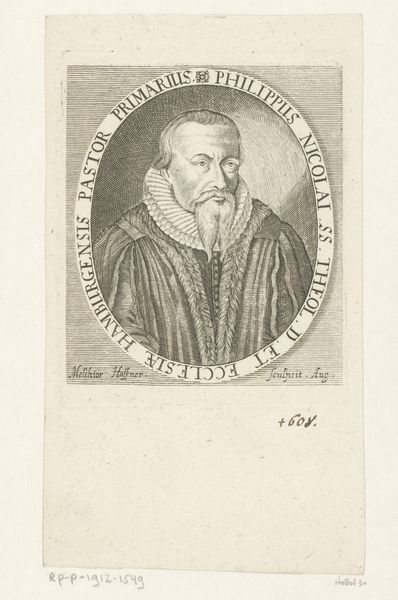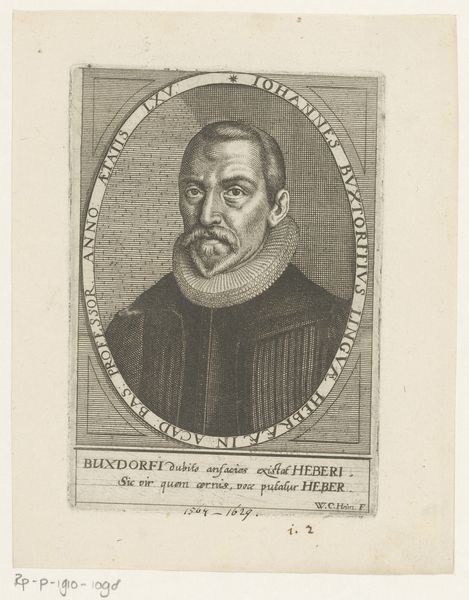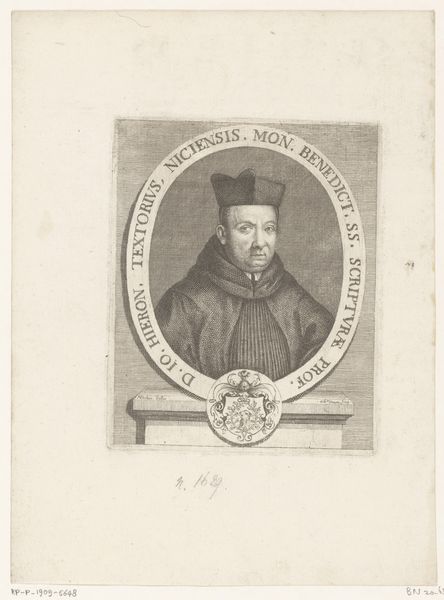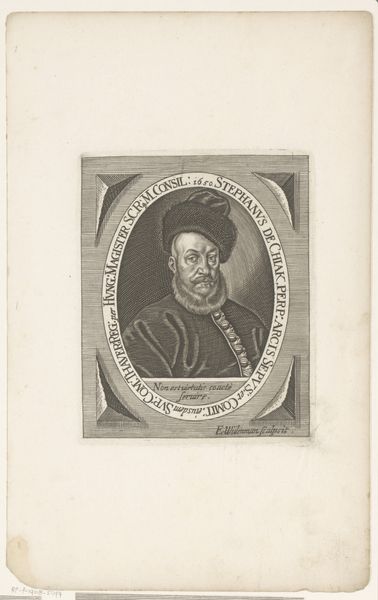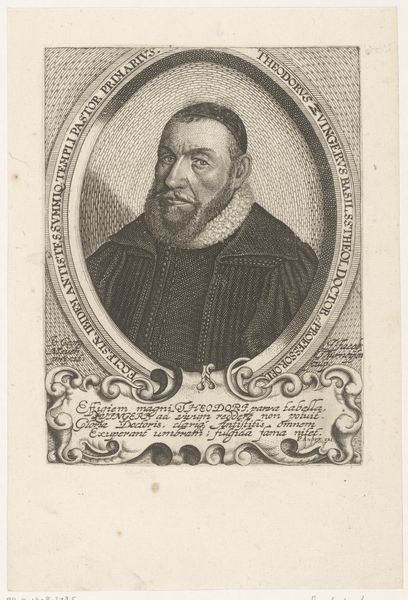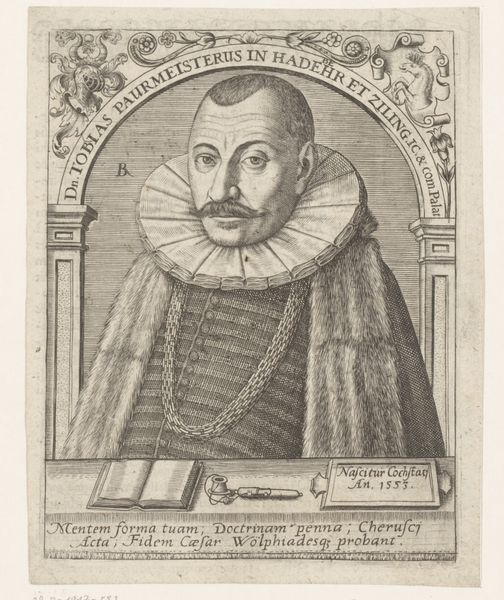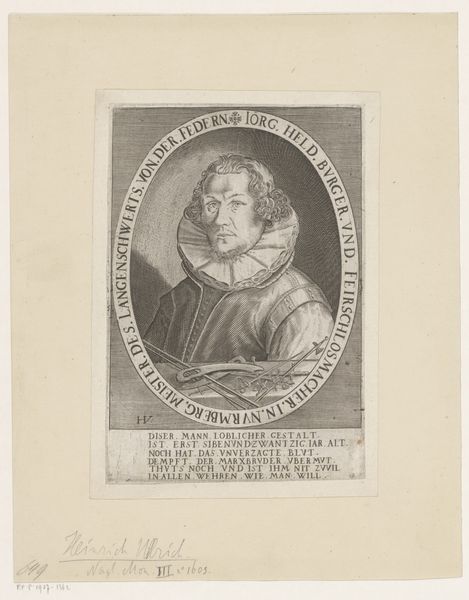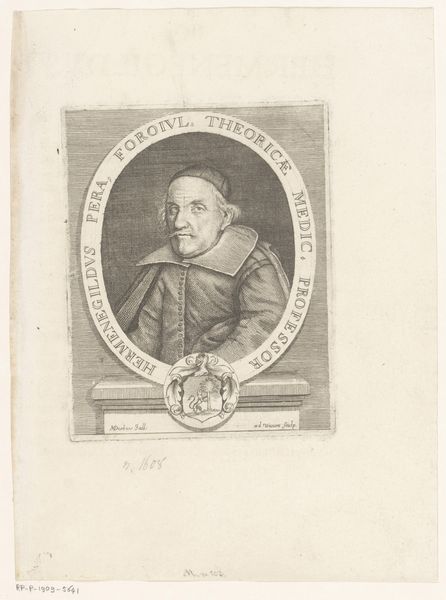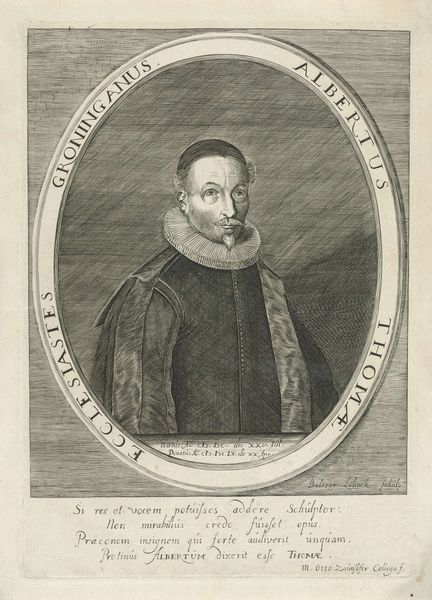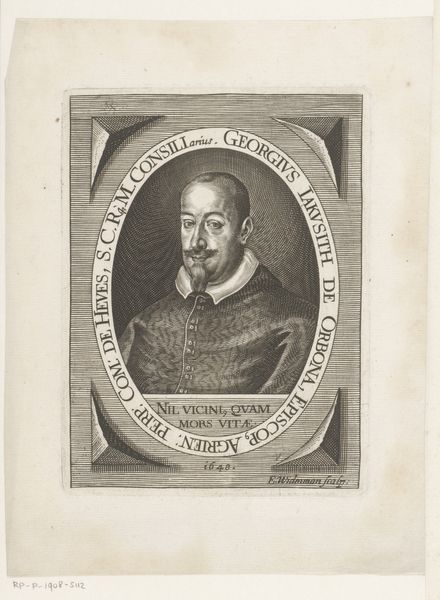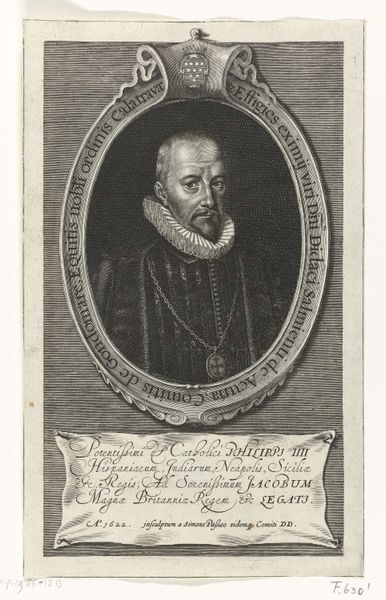
Dimensions: height 139 mm, width 85 mm
Copyright: Rijks Museum: Open Domain
Curator: It’s striking how austere and imposing Jacob van der Heyden manages to make this engraving of Johann Buxtorf, given its relatively small size. I see in this period portrait elements of transition toward a personal rendering—more than the stereotypical prints one typically finds of learned scholars. Editor: Yes, I find this portrait incredibly reserved. I mean, the precision of the engraving, the rigid collar... It gives the impression of a very contained personality, befitting someone whose role places him in the emergent bourgeois of this historical era and emerging power dynamics. Curator: Indeed. The print, dating sometime between 1529 and 1645, employs the meticulous craft of engraving on metal. Notice the layering of ink and its relationship to the copper or steel support, it’s critical to achieving that level of detail in his face and clothing, rendering textures that signify wealth, rank and religious affiliations. Editor: The text surrounding Buxtorf’s likeness speaks volumes too. In its appeal to knowledge and academia, it reinforces the importance of accessing information, of controlling the narrative… consider, the engraving medium allowed for multiples to circulate. Who had access to this image and its inherent power dynamics? Who was kept outside its frame? Curator: Good questions. Consider that printed images allowed for a wider distribution of likeness, thus impacting representation and solidifying individual identities tied to professional status or learning. Here the means of image production directly impacts and reshapes its reception. Editor: Absolutely. The crisp lines and shading are not simply aesthetic choices but active signifiers of class and intellectual labor. We are prompted to contemplate the image not just as a portrait but as a material product shaped by societal structures. It makes me question whose stories are amplified and whose remain untold within these seemingly simple representations. Curator: Right. We have this image as a kind of artifact pointing back to the relationship between technology and emerging notions of identity. Looking at it today, its impact lingers. Editor: Precisely. It makes you consider the legacy and continuation of this form of material authority—how art itself can be a carefully constructed assertion of self.
Comments
No comments
Be the first to comment and join the conversation on the ultimate creative platform.
